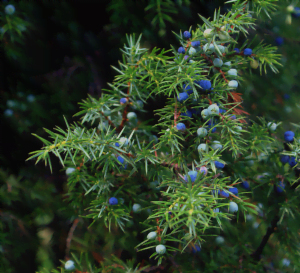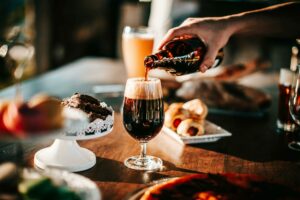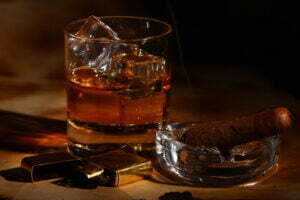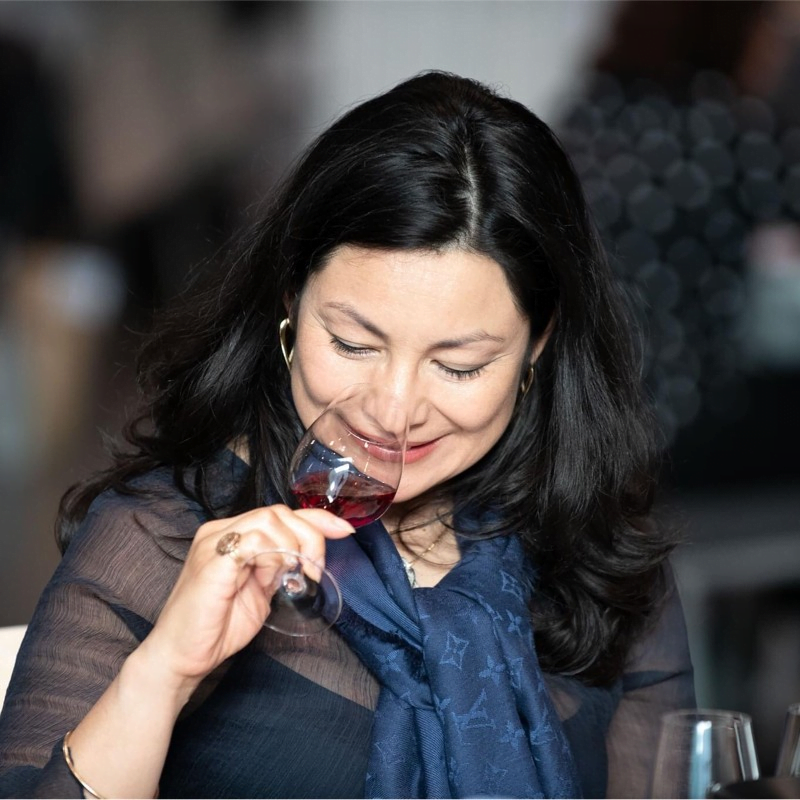A few years ago, aboard a long-haul flight to Mumbay, after a night of fitful sleep, I struggled towards the water point. Obviously, I am not the only passenger to have had this idea, and I therefore wait in this narrow corridor. However, my gaze falls on the half-open doors of the neighboring cabins, I discover that they are occupied by the crew. Hostesses and stewards stretch out and get ready. The gesture of a steward catches my attention, he grabbed a mignonette of Gin, at that moment I said to myself that it is a bit early for the gin, but to my surprise, he uncorks it, sprinkles it on his hands, then rubs it on his cheeks and neck. I am still seduced today by this gesture which I found simple and elegant. After all, little differentiates gin from cologne. An alcoholic support containing aromatic essences, spices, flowers, fruits… Why not perfume yourself with gin? Why not drink your cologne?
Gin & Perfume: A common ancestor
It all starts with Perfume. Since ancient times, with the pantheons being established in the heavens, Men have sought to commune with the Gods through the rising smoke. They burn fragrant materials, so that this fragrant white smoke rises to the divine home, this is the latin origin of the word perfume “per fume»: «by the smoke”. It was the Egyptians who invented the first perfume, the Kyphi. It is a versatile ointment, which can be used as incense, perfume, as a treatment soothing aches and pains in body and mind. Kyphi’s recipes are numerous, and generally include about fifteen ingredients, among these we will always find juniper berries.
Divine medicine
Many ancient sciences are grouped together under the term “alchemy”. Long before it was reduced to an obsession with transmuting lead into gold, alchemy, and its practitioner, the alchemist, represented wisdom, knowledge, and the most advanced scientific techniques. Juniper and its fruit have long been known for their multiple qualities. But it was with the arrival of the still and the mastery of distillation (around the 12th century) that alchemy took off again, and the juniper berry with it. Through distillation, one can extract the very essence of matter, its soul, its spirit. In the 14th century, alchemy treatises mentioning the use of juniper wood and its fruit are numerous, juniper berry is the champion of grimoires, but its distillate is far from being recreational. However, appear the “aqua vitae” and other “aqua mirabilis”, these miracle potions, based on spirit distillates of wine and multiple ingredients, are used for the care of all ailments, in external use (friction, poultice) as well that internal …
The First appearance of Gin
The first “gin” recipe for recreational rather than medicinal use originated in the Netherlands. Called “Verbatim 1495”, it appears to have been commissioned by a wealthy gentleman from Flanders. This recipe, which contains no less than fifteen ingredients, is exceptional for the time because it contains spices from the Orient in quantity. These first bottles of “gin” were therefore of immense value. Far from being an isolated try, the distillation, as well as the consumption of this “genever” will gradually establish itself across Flanders. At that time this kingdom reigned over the seas, thanks to its fast ships, and its all-powerful “East India Company”, the best Merchant Navy in the known world. What could be easier, therefore, for those who can afford it, than to provide themselves with the rarest and most exotic spices.
In 1693 a certain Giovanni Paolo Feminis, an Italian gentleman, settled in Cologne in order to sell a Miraculous Water of which he would hold the recipe. This one is based on an Aqua Mirabilis composed of spirit of wine, lemon, citron, bergamot, lemon balm, rosemary and neroli. This formula will build him a reputation throughout Europe. His heir, Jean-Marie Farina will be forced to leave Cologne for Paris, where he will also establish himself as a perfumer, holder of the authentic formula of the “Eau de Cologne”. Until it was bought in 1862 by perfumers Armand Roger and Charles Gallet, founders of Maison Roger & Gallet, which still produces “L’Extra Vieille” today.
The emancipation of Gin
The gin ended up arriving in England where it seduced the people. In London, a succession of decrees (Gin Acts) will lead to an unprecedented crisis: “gin craze” is spreading in the capital, consumption is soaring, and the health of London is collapsing a little more. From these dark times will be born the first legislation on the production and consumption of this alcohol. Thus, the gin will end up seducing the elites of London, who following the conflicts with France are deprived of brandy. The gin will even be valued aboard the Royal Navy for its healing qualities, where its chief doctor, Sir Thomas Desmond Gimlette, will develop a recipe based on a mixture of gin and lime supposed to neutralize scurvy and dysentery. At the same time, the Plymouth distillery supplied 1000 barrels per year of “Navy strength” gin. Across the Channel, Napoleon conquered Europe. During his military campaigns, the emperor had his bottles of Cologne delivered regularly. He has a disproportionate consumption of it, no less than a liter per day! The emperor takes his perfumed baths at any time of the day or night, gets a rub, and even confesses to swallowing a lamper before going to the battle.
The reunion
The 20th century will see the height of gin and its decline. A favorite ingredient during the heyday of cocktail art, it will be forgotten in favor of vodka, whose neutral and dry style will appeal to bartenders. L’Eau de Cologne will go from imperial favorite to popular classic. Symbol of its place in society, this embarrassing product will hesitate between the shelves of pharmacies and perfumeries to end up on those of supermarkets.
In 1987, when “Bombay Sapphir” hit the dying gin market, it was a revolution. The distillery uses a “carterhead” still, which extracts botanics through alcohol vapor rather than direct contact with the liquid. The resulting gin is fine and delicate, sweet like a real perfume. This ancient technique, however, gives ideas to many distillers, and new styles of gin appear.
In France, couturier Thierry Mugler, who is used to style breakthroughs, launched in 2001 his Cologne based on an accord: bergamot, petitgrain, neroli, orange blossom and white musks. A refined vision of the original recipe, the fragrance is unisex, the design of the bottle is pure, it is a huge commercial success.
In 2015, the gin from the Hepple estate arrived on the market. It is the result of the collaboration of a chef, a barman and a distiller, the objective is to obtain a gin with all the facets of juniper. In addition to the usual techniques, the trio uses supercritical fluid extraction, which allows the extraction of aromatic molecules without altering their structure. Cutting-edge technology from the perfume industry …
Today, it is said that a new gin is hitting the market every day. The enthusiasm for this product is unprecedented: where the aromas of a glass of whisky can confuse the enthusiast, the gin is crisp and clear. Its development, which may seem simple, is in fact extremely complex. Through their actions, the great distillers remind us every day that alchemy is not so far away, and that gin is a cologne that can be drunk.
Find Hugo Plault our spirit expert, author of this article, during our WSET training courses on spirits.









